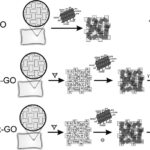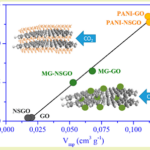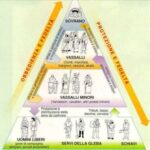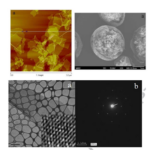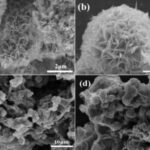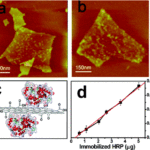January 13, 2025 Graphene, Great Reset, That terrible virus never isolated
Medical arrogance is even worse today than it was 100 years ago.
The 1919 Forgotten Genocide
It all began with the Rockefeller Institute’s experiment of a so-called “vaccination” against bacterial meningitis on American troops.
It all ended with the deaths of 50-100 million people worldwide.
During the war years (1918-19), the U.S. Army reached 6,000,000 men, 2,000,000 of whom were sent overseas.
The Rockefeller Institute for Medical Research took advantage of this new pool of “human guinea pigs” to conduct “experiments” on so-called “vaccines” and sent its experimental anti-meningococcal serum to England, France, Belgium, and Italy.
This helped to spread the epidemic around the world.
From January 21 to June 4, 1918, the Rockefeller Institute for Medical Research in New York experimented with a so-called “vaccine” against bacterial meningitis, grown on horses and injected into soldiers at Fort Riley.
Over the course of 1918, these soldiers, often living and traveling in poor sanitary conditions, were sent to fight in Europe, spreading the bacteria at every stop between Kansas and the front lines in France.
One study described soldiers with active infections who “aerosolized the bacteria that colonized their noses and throats, while others, often in the same “breathing spaces, were highly susceptible to rapid spread through their lungs by their own or others’ colonizing bacteria”. (1)
When World War I ended on November 11, 1918, soldiers returned to their home countries and colonial outposts, spreading the deadly bacterial pneumonia around the world.
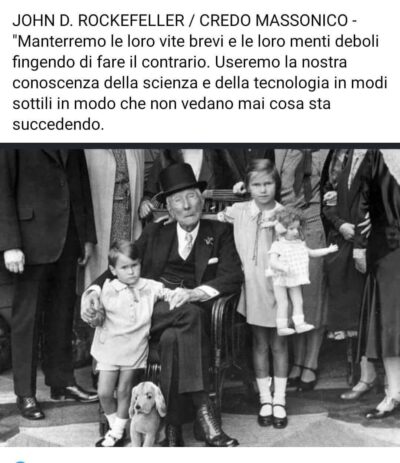
During World War I, the Rockefeller Institute sent its experimental anti-meningococcal serum to England, France, Belgium, Italy, and other countries, helping to spread the epidemic worldwide.
According to “official” medical doctrine, the so-called “Spanish flu” killed 50-100 million people in 1918-19, including many soldiers.
Many people still do not realize that this disease caused more deaths than machine guns or any of the other weapons typically associated with World War I.
Furthermore, in 1918, “influenza” was a generic term for a disease of unknown origin.
It did not have the specific meaning it has today.
In fact, the meaning of the word comes from the medieval Latin “influent“, in the astrological sense of “a visitation under the influence of the stars”.
Why is what happened more than 100 years ago important at this particular time ?
Between 1900 and 1920 there was an enormous effort in the industrialized world to build a “better” society.
For the sake of simplicity, we will use the city of New York as an example to discuss three major changes that occurred during this period and their impact on infectious disease mortality.
Clean Water and Sanitation
In the late 19th and early 20th centuries, New York built the system still in use today to bring clean water from the Catskill.
It also built more than 6,000 miles of sewers to transport and treat waste. (2)
Electricity
In the late 19th and early 20th centuries, New York built an electrical grid and wired the city so that electricity was available in every home.
The Rockefeller Pharmaceutical Industry
In the late 19th and early 20th centuries, New York became home to the Rockefeller Institute for Medical Research (now Rockefeller University).
The so-called “vaccine” used in the Fort Riley experiment on soldiers had first been tested on horses by the pharmaceutical industry.
Data on mortality rates in the United States from the early 20th century to 1965 clearly show that clean water, flushing toilets, effective sewage systems, and refrigerated foods effectively reduced mortality from infectious diseases, and certainly not the spread of so-called “vaccines”.
The Disease Was Not “Spanish”
Spain was one of the few countries not involved in the First World War.
As a result, it was a country free from censorship, unlike the countries involved in World War I.
It was therefore normal that the first press reports of large numbers of people dying from a “new infectious disease” came from Spain.
The belligerents did not want to further frighten their troops, so they decided to blame Spain.
Soldiers on all sides were asked to cross no man’s land under machine gun fire, which was scary enough without knowing that the trenches were a breeding ground for infectious diseases.
If such a “flu” started on a U.S. military base in Kansas and then spread around the world as a result of an experiment on U.S. soldiers, then the U.S. should call this flu “The Fort Riley Bacteria of 1918” or something similar.
In fact, the so-called “Spanish Flu” began where this so-called “experimental bacterial vaccine” was administered, making it the prime (and only) suspect as the source of the bacterial infections that killed so many people.
It would be much harder to sustain the marketing mantra :
“Vaccines save lives”.
On the other hand, if Big Pharma admitted that an experiment with a so-called “vaccine” had caused the deaths of 50 to 100 million people, as we are still seeing, what would be the consequences ?
The disease that killed so many people was neither the flu nor a “virus. It was a bacterium
Beginning in the year 2000, the mass media devoted considerable space to “preparing for a possible pandemic“.
Manufacturers of so-called “vaccines” against influenza in the U.S. received billions of dollars in funding to develop so-called “vaccines” so that they could be sure that another deadly pandemic “flu” like that of 1918-19 would not occur.
All of this helped the manufacturers of the so-called “vaccines” get massive government funding, even though scientists knew at the time that bacterial pneumonia was the real killer.
It is not my opinion that bacterial pneumonia was the leading cause of death – thousands of autopsies have confirmed this fact.
According to a 2008 paper by the National Institute of Health, bacterial pneumonia was the cause of death in at least 92.7 percent of autopsies performed in 1918-19.
It is very likely that the number is even higher, approaching 100 percent.
The researchers performed about 9,000 of them.
These were the results :
“In the 68 high-quality autopsy series in which the presence of negative unreported cultures could be excluded, 92.7% of autopsy lung cultures were positive for at least one bacterium.
In a study of approximately 9,000 individuals followed from clinical presentation with influenza to resolution or autopsy, researchers obtained pneumococcal or streptococcal cultures from 164 of 167 lung tissue samples using sterile technique.They found 89 pure pneumococcal cultures, 19 cultures that yielded only streptococci, 34 cultures that yielded mixtures of pneumococci and/or streptococci, 22 cultures that yielded a mixture of pneumococci, streptococci, and other organisms (mainly pneumococci and nonhemolytic streptococci), and 3 cultures that yielded only nonhemolytic streptococci.
No negative lung cultures were found”. (3)
So pneumococci or streptococci were found in “164 of 167 lung tissue samples” submitted for autopsy.
That is 98.2%.
Bacteria, of course, were the killer.
So where did the bacterial pneumonia of 1918-19 come from ?
When the U.S. entered the war in April 1917, the pharmaceutical industry suddenly had a large supply of human test subjects : the U.S. Army’s first real draft battalion.
Before the war, in 1917, the U.S. Army had 286,000 men.
After the war, in 1920, the Army was disbanded and had 296,000 men.
During the war years, 1918-19, the U.S. Army grew exponentially to 6,000,000 men, 2,000,000 of whom were sent overseas.
The Rockefeller Institute for Medical Research took advantage of this new pool of human guinea pigs to conduct experiments on so-called “vaccines”.
In 1918, Dr. Frederick L. Gates, MD, recorded a report on so-called anti-meningitis “vaccination” and observations on agglutinins in the blood of chronic meningococcal carriers.
Between January 21 and June 4, 1918, Dr. Gates reported on an experiment in which soldiers were given three doses of a so-called “vaccine” against bacterial meningitis.
4,792 men received the first dose, but only 4,257 received the second dose (-11%), and only 3,702 received all three doses (-22.7%).
A total of 1,090 men failed to show up for the third dose.
What happened to these soldiers ?
Were they shipped east by train from Kansas to board a ship to Europe ?
Were they in the hospital at Fort Riley ?
However, Dr. Gates’ report makes no mention of this fact, so most likely they had died in the meantime.
What we do know is that Dr. Gates began his experiments in January 1918.
By March of that year, 100 men a day were entering the Fort Riley infirmary.
Are some of these men the ones missing from Dr. Gates’ report, the ones who did not receive the second or third dose ?
“… Just before breakfast on Monday, March 11, the first domino would fall, marking the beginning of the first wave of the 1918 flu.
Company cook Albert Gitchell showed up at the camp infirmary with a “bad cold.Shortly after, Cpl. Lee W. Drake arrived with similar symptoms.
By noon, Field Surgeon Edward R. Schreiner was treating more than 100 sick men, all apparently suffering from the same disease…” (3)
Dr. Gates reported that many of the men who had been injected with the so-called “vaccine” experienced flu-like symptoms : coughing, vomiting, and diarrhea.
These symptoms were catastrophic for men living in barracks, traveling on trains to the Atlantic coast, sailing to Europe, and living and fighting in trenches.
Indeed, unsanitary conditions encouraged the spread of infectious diseases such as bacterial pneumonia.
Dr. Gates’ report also states :
“Several cases of sluggish bowels or transient diarrhea have been noted.
This symptom had not been noted before.Careful investigation of individual cases often led to the information that men complaining of vaccination effects were suffering from mild colds, bronchitis, etc., at the time of injection.
Sometimes the reaction began with a cold or chill, and a number of men complained of fever or feverish sensations during the following night.
The most common complaints were nausea (occasionally vomiting), dizziness, and general “aches and pains” in the joints and muscles, in some cases localized in the neck or lumbar region, causing stiffness in the neck or back.
Some injections were followed by diarrhea.The reactions therefore occasionally mimicked the onset of epidemic meningitis, and several vaccinated men were sent to the base hospital for diagnosis”. (4)
According to Dr. Gates, U.S. Army soldiers had been injected with doses of a so-called experimental “vaccine” against bacterial meningitis.
Later, however, some of the soldiers manifested symptoms that “mimicked” meningitis itself.
However, Dr. Gates made the rather fanciful claim that it was not “real meningitis“.
In his opinion, the soldiers had developed flu-like symptoms.
However, bacterial meningitis is known to mimic the symptoms of the flu. (5)
Why did the so-called “Spanish” spread so far and so fast ?
There is a very specific reason that fully explains why Dr. Gates’ bacteria spread so quickly.
A 2008 CDC article describes how sick soldiers in World War I could easily transmit the bacteria to others :
“Eventually, for short periods and to varying degrees, affected hosts became ‘cloud adults,’ increasing aerosolization of colonizing bacterial strains, especially pneumococci, hemolytic streptococci, H. influenzae, and S. aureus.
For several days during local outbreaks, especially in crowded environments such as hospitals, military camps, troop ships, and mines (and trenches), some people were immunologically predisposed, infected, or recovering from influenza virus infections.
People with active infections aerosolized the bacteria that colonized their noses and throats, while others, often in the same “breathing spaces,” were highly susceptible to invasion and rapid spread into their lungs by their own or others’ colonizing bacteria”. (6)
In his report on the Fort Riley vaccine experiment, Dr. Gates stated three times that some soldiers had suffered a “severe reaction“, indicating “unusual individual susceptibility to the vaccine“.
The toll on American troops was staggering.
Dr. Carol Byerly described how the “flu” spread rapidly through the U.S. military.
“By March, fourteen of the largest training camps had reported outbreaks of influenza, and some of the infected troops carried the virus aboard ships bound for France.
As soldiers in the trenches fell ill, the military evacuated them from the front lines and replaced them with healthy men.
This process constantly brought the virus into contact with new hosts, young, healthy soldiers, in whom it could adapt, reproduce, and become extremely virulent without exhausting itself in any way.
… Before a travel ban could be imposed, a contingent of replacement troops left Camp Devens (outside Boston) for Camp Upton on Long Island, the Army’s landing point in France, bringing the flu with them”.
Medical officials at Upton said the flu arrived “abruptly” on September 13, 1918, with 38 hospitalizations, followed by 86 the next day and 193 the day after that.
“There was a peak of 483 hospitalizations on October 4, and within 40 days Camp Upton sent 6,131 men to the hospital for influenza.
Some developed pneumonia so quickly that doctors diagnosed it simply by observing the patient rather than listening to the lungs…” (7)
The United States was not the only country in possession of the Rockefeller Institute’s experimental bacterial vaccine.
A 1919 Institute report states : “It should be noted that before the United States entered the war (in April 1917), the Institute had resumed the preparation of anti-meningococcal serum to meet the demands of England, France, Belgium, Italy, and other countries“.
The same report states : “In order to meet the suddenly increased demand for the curative serums processed at the Institute, a special stable for horses was quickly built…” (8).
A so-called experimental anti-meningococcal “vaccine” tested only on horses and then inoculated on soldiers who would soon enter the cramped and unsanitary living conditions of war… what could have gone wrong ?
Perhaps this so-called experimental “vaccine” was responsible for the 50-100 million deaths from bacterial lung infections in 1918-19 ?
The Rockefeller Institute claims to have distributed the so-called “vaccine” in England, France, Belgium, Italy and other countries during World War I.
According to the medical literature, the effects of the so-called “vaccine” on soldiers from other countries are not known.
However, I have some suspicions, since my grandfather fought in World War I, where he officially contracted pneumonia (fortunately he was saved), and because of this disabling disease he was discharged from the Italian army shortly after the end of the Great War.
And from his childhood stories, I remember well that his words about what happened were more or less these :
“So many of us went to the sanatoriums, but very few of us came out alive”.
Doctors “play God” and think they can always tame nature without creating unforeseen problems.
On the other hand, the so-called “vaccine” industry is always looking for new subjects to test on humans.
Often, however, they find no populations they can refuse.
Soldiers, infants, the handicapped, prisoners, inhabitants of so-called developing countries.
The arrogance of the medical community is even worse today than it was 100 years ago.
Clean water, sanitation, flushing toilets, refrigerated foods, and healthy diets have improved the living conditions of mankind by protecting them from infectious diseases.
Certainly not the Rockefellers’ so-called “vaccine” program, which in fact was responsible for a genocide (never punished) that caused the deaths of 50 to 100 million people worldwide.
Doctors and the so-called “vaccine” industry have always usurped the credit that rightfully belongs to plumbers, electricians, civil engineers, and urban planners.
References
(1) Deaths from Bacterial Pneumonia during 1918–19 Influenza Pandemic, John F. Brundage* and G. Dennis Shanks†. Author affiliations : *Armed Forces Health Surveillance Center, Silver Spring, Maryland, USA; †Australian Army Malaria Institute, Enoggera, Queensland, Australia. https://wwwnc.cdc.gov/eid/article/14/8/07-1313_article
(2) World Health Organization : Unsafe drinking water, sanitation and waste management. http://www.who.int/sustainable-development/cities/health-risks/water-sanitation/en/
(3) J Infect Dis. 2008 Oct 1 ; 198(7) : 962–970. Predominant Role of Bacterial Pneumonia as a Cause of Death in Pandemic Influenza : Implications for Pandemic Influenza Preparedness, David M. Morens, Jeffery K. Taubenberger, and Anthony S. Fauci. https://www.ncbi.nlm.nih.gov/pmc/articles/PMC2599911/
(4) PDF of Fort Riley Study (1918) : https://www.ncbi.nlm.nih.gov/pmc/articles/PMC2126288/pdf/449.pdf
(5) Mayo Clinic : Meningitis. www.mayoclinic.org/diseases-conditions/meningitis/symptoms-causes/syc-2035050(8
(6) Public Health Rep. 2010 ; 125 (Suppl 3): 82–91. The U.S. Military and the Influenza Pandemic of 1918–1919, Carol R. Byerly, PhD. https://www.ncbi.nlm.nih.gov/pmc/articles/PMC2862337/
(7) Rockefeller Institute pamphlet PDF (1919) : https://digitalcommons.rockefeller.edu/cgi/viewcontent.cgi?article=1005&context=rockefeller-institute-descriptive-pamphlet
(8) Is Military Research Hazardous to Veterans’ Health ? Lessons Spanning Half a Century, A Staff Report Prepared for the Committee on Veterans’ Affairs, United States Senate, December 1994. https://www.hsdl.org/?abstract&did=438835

